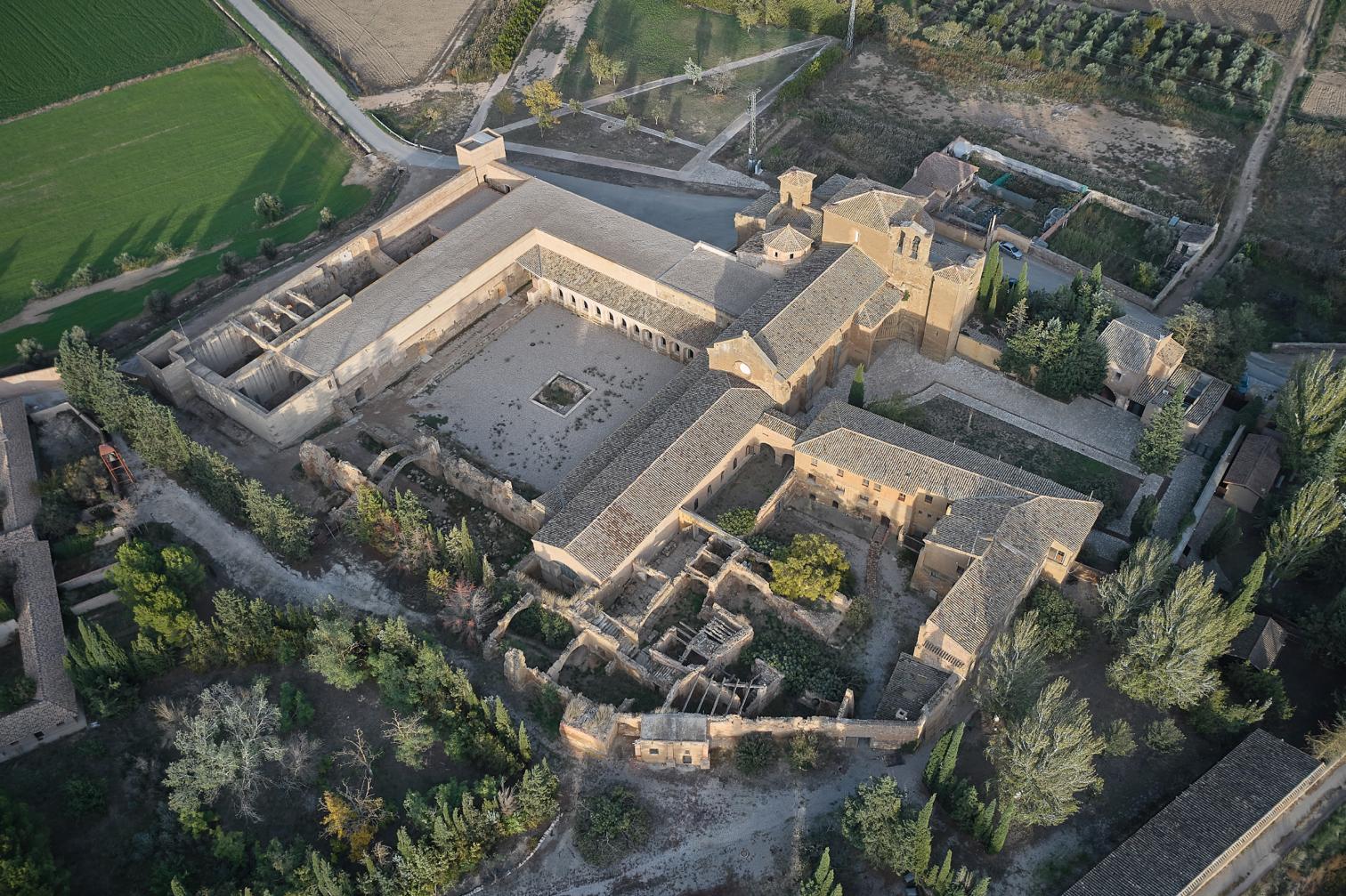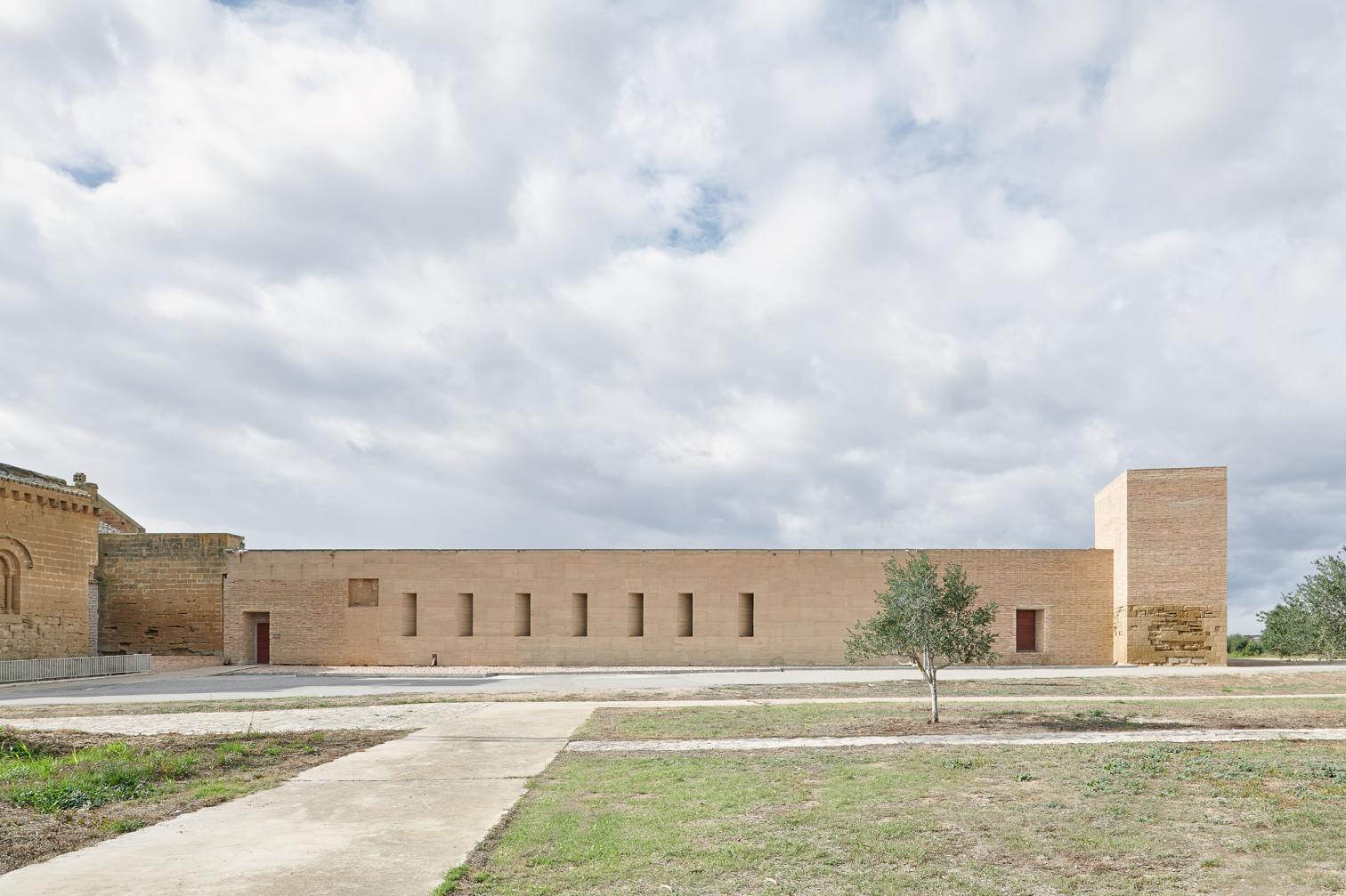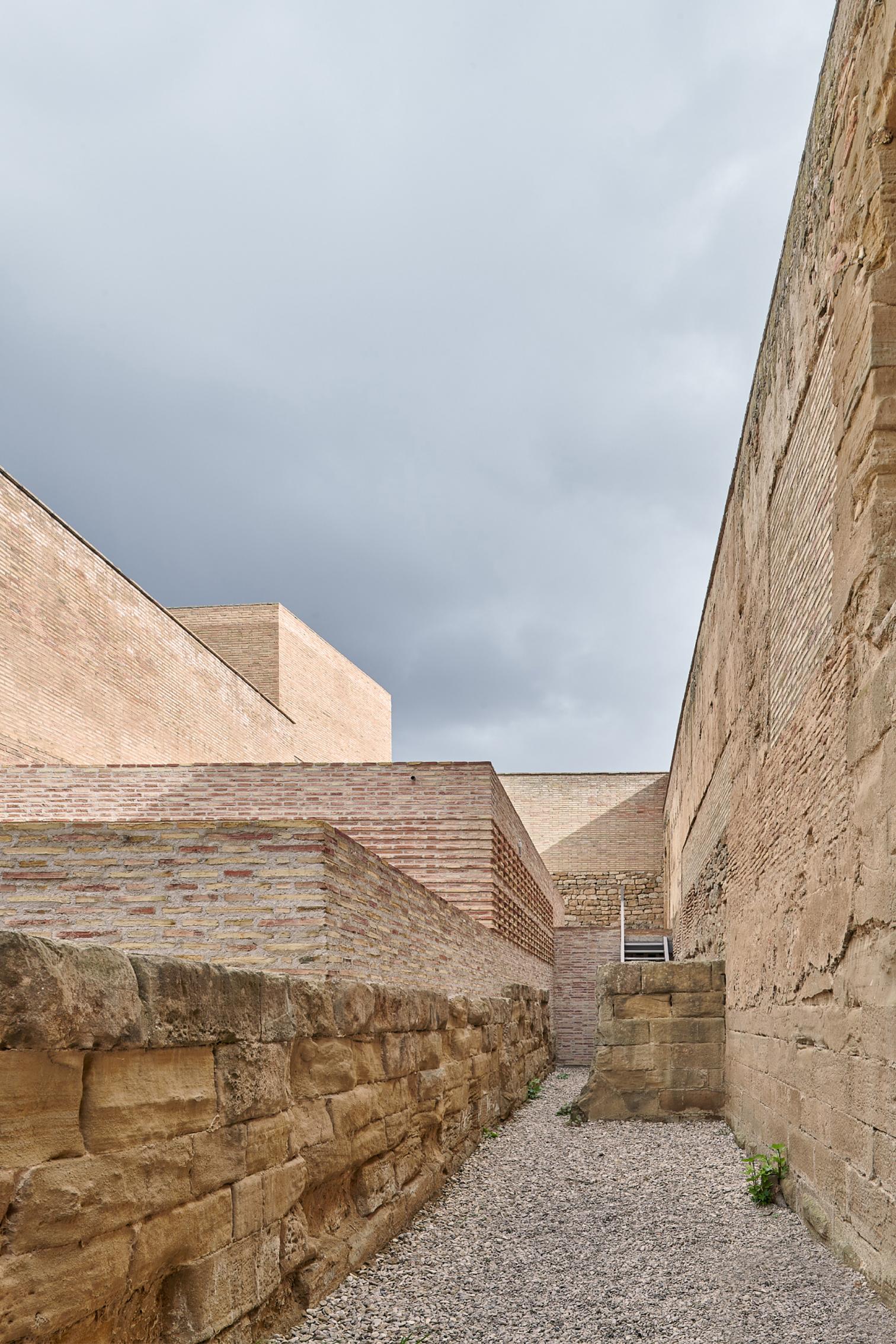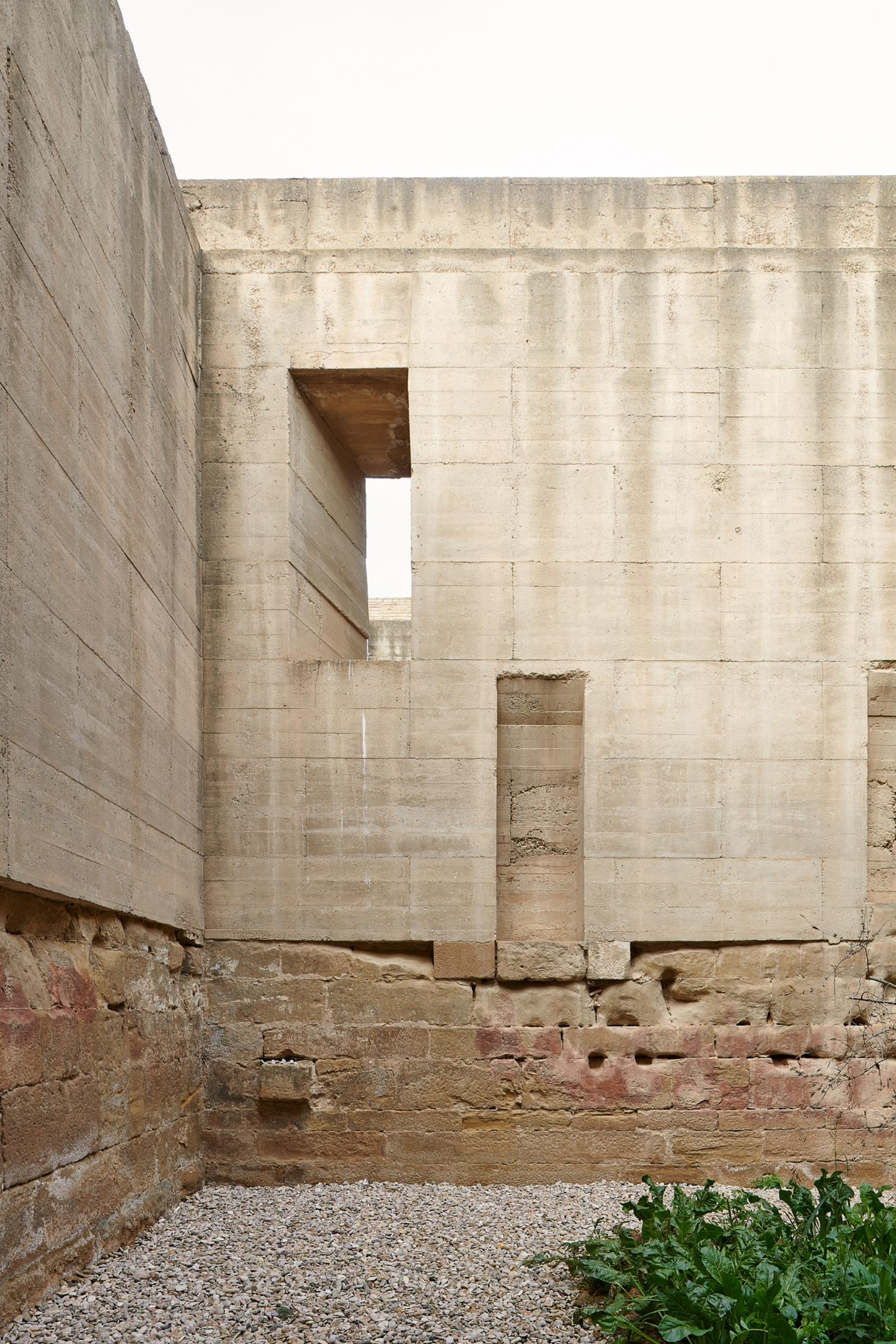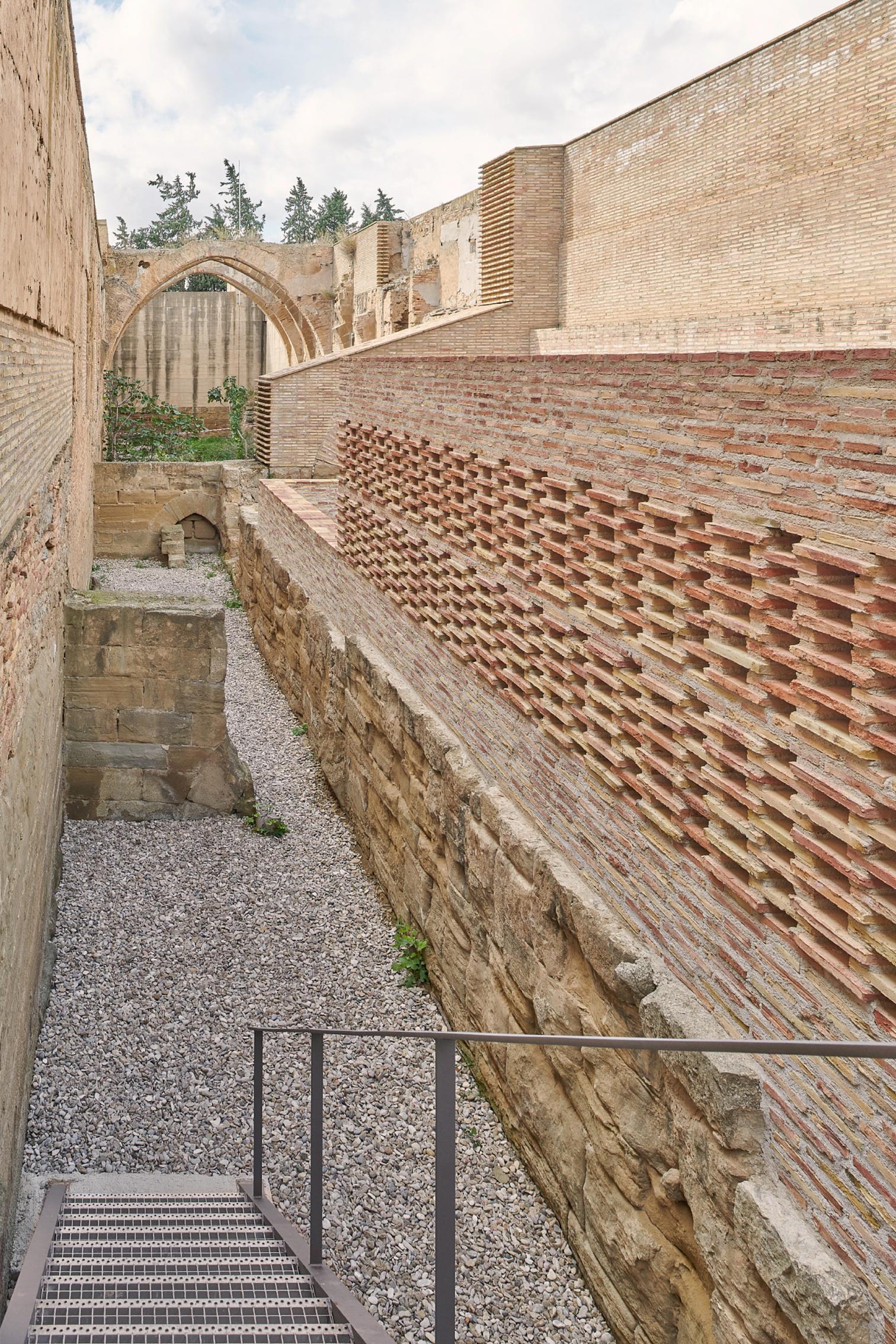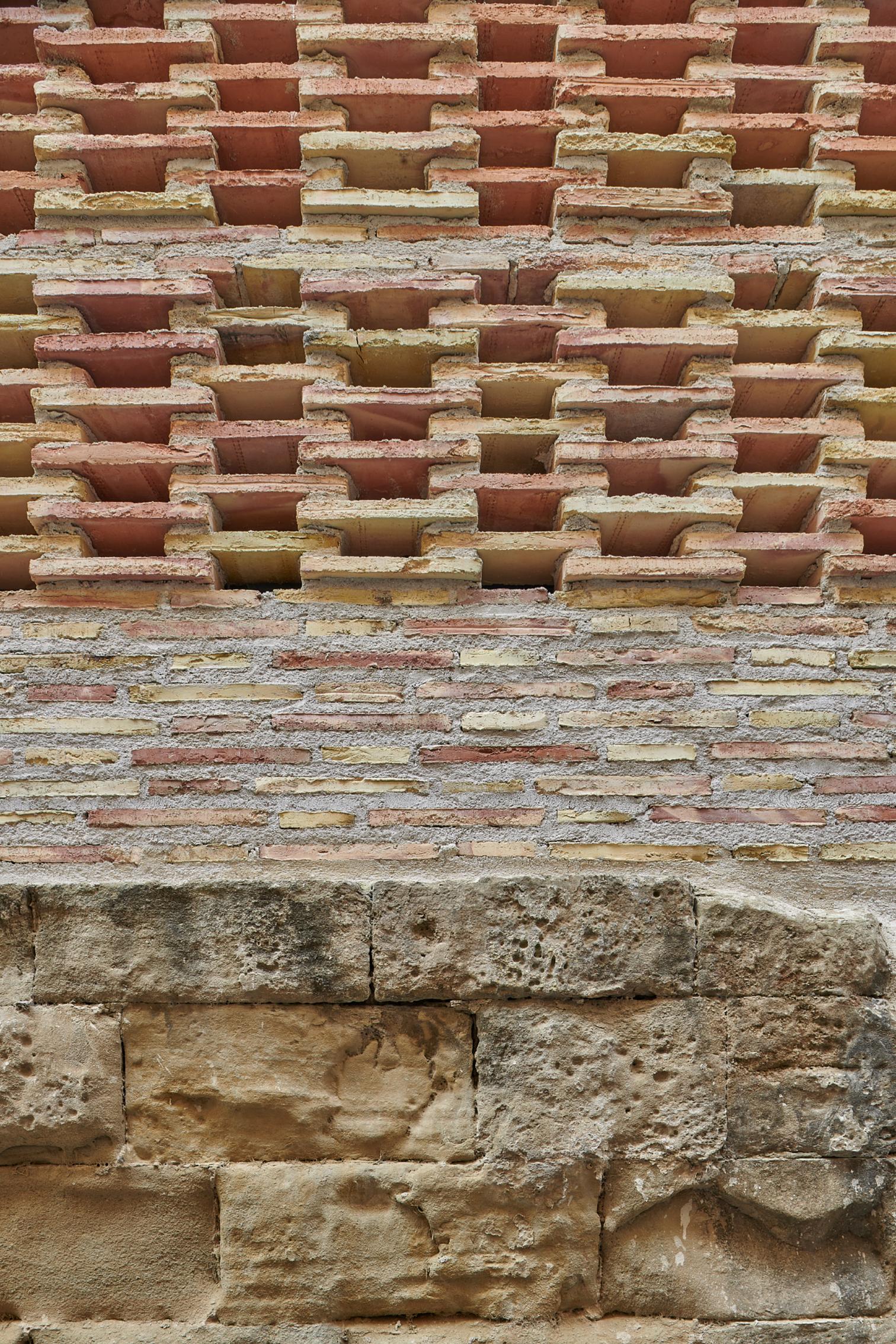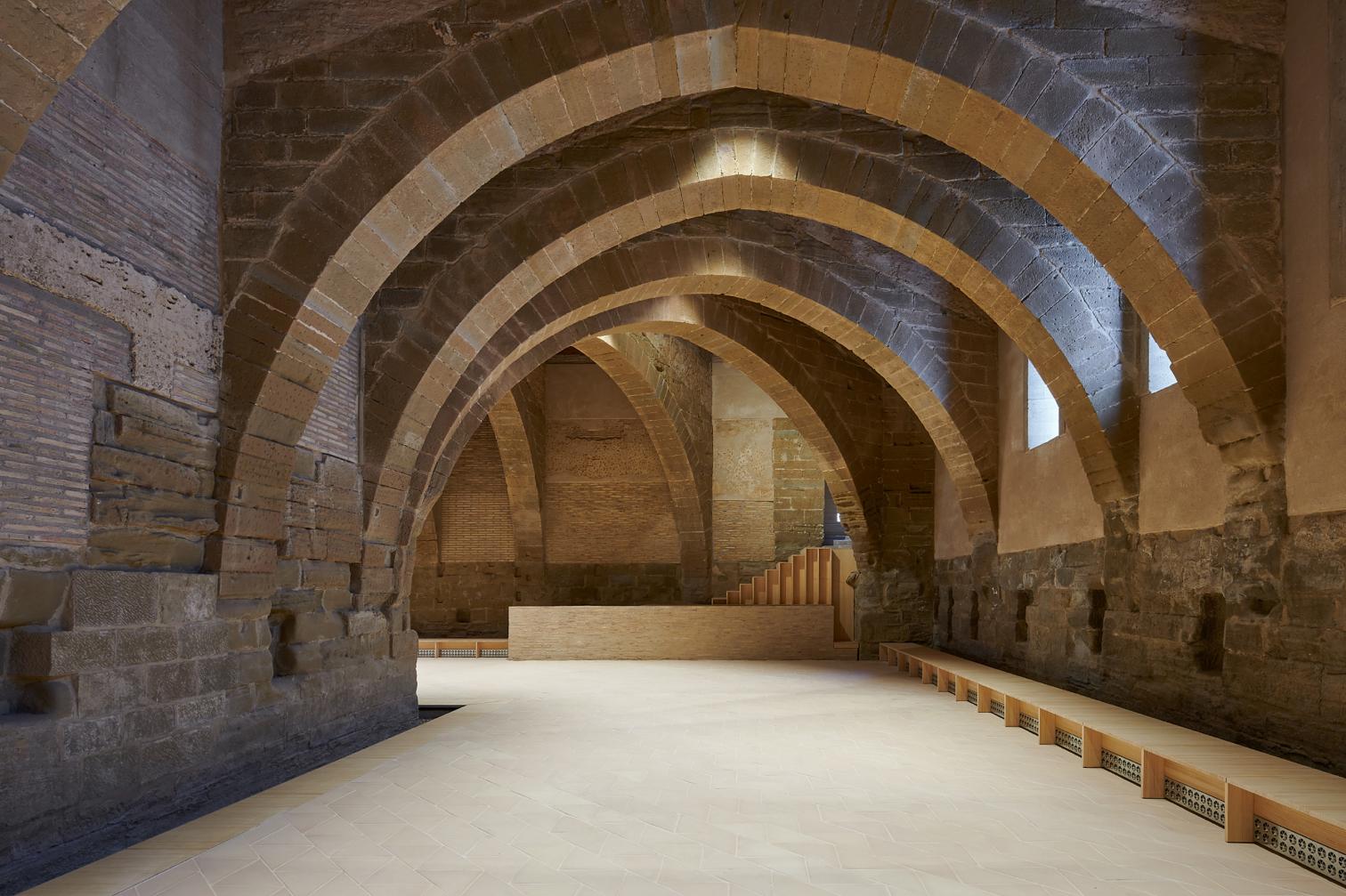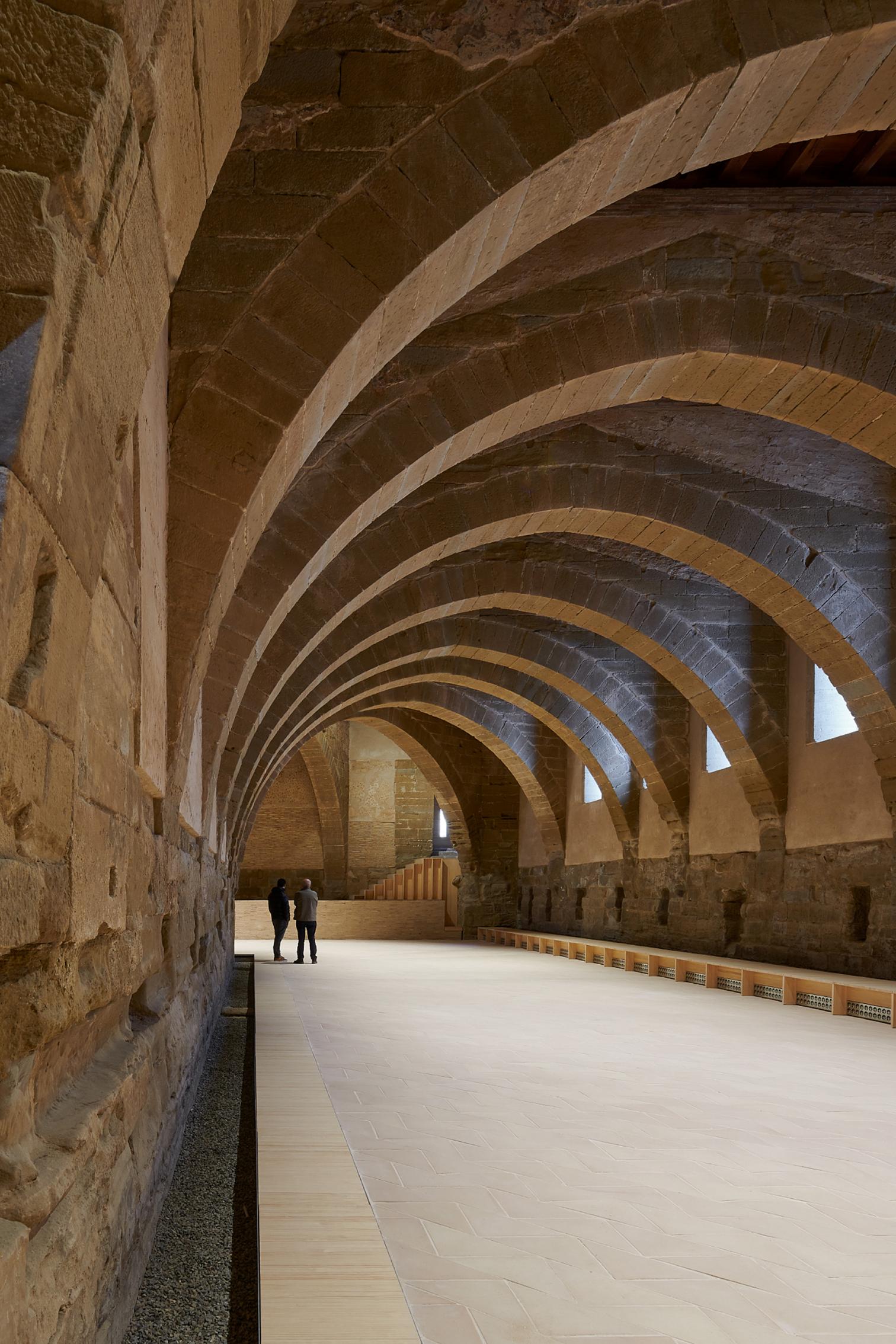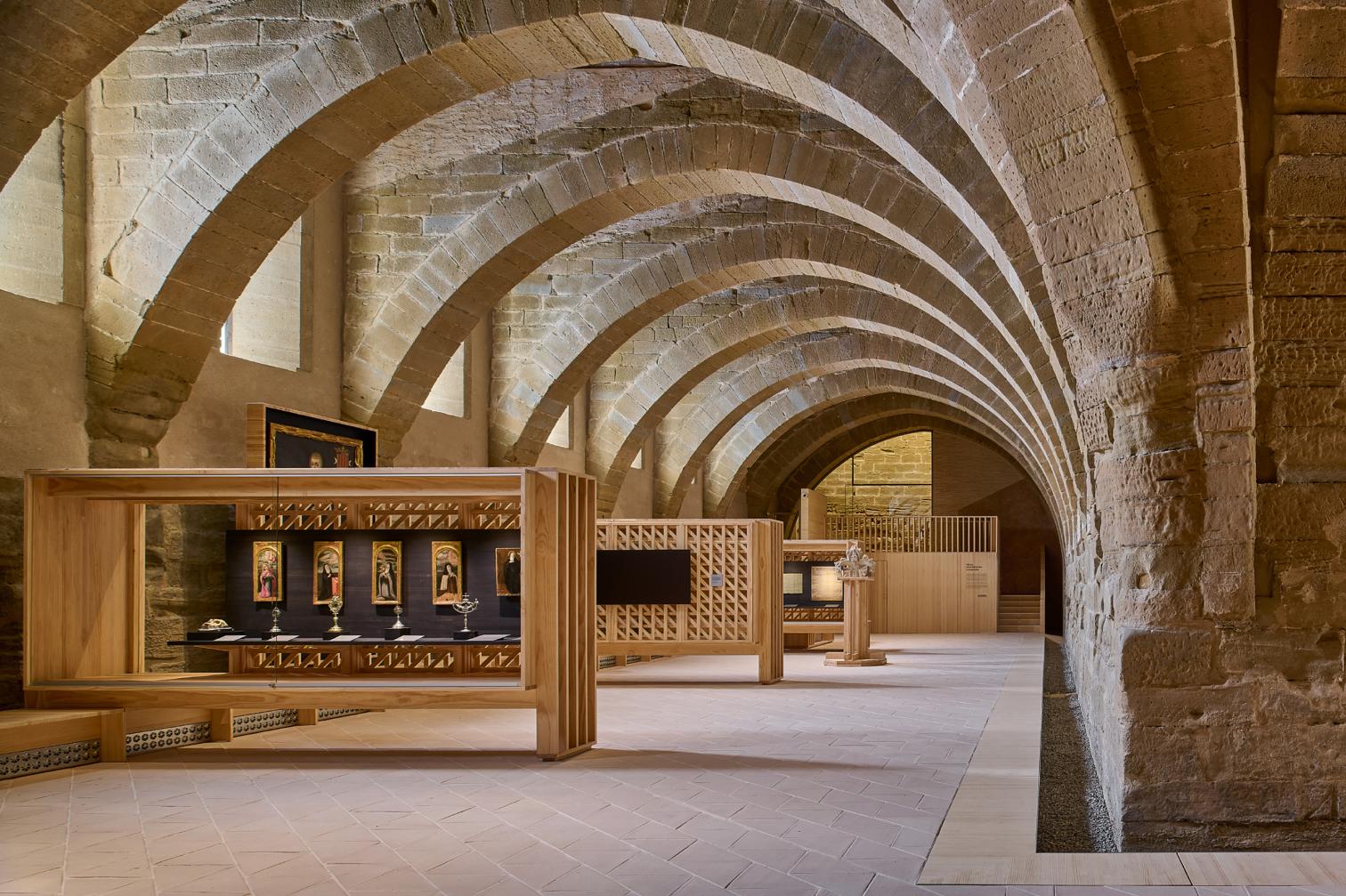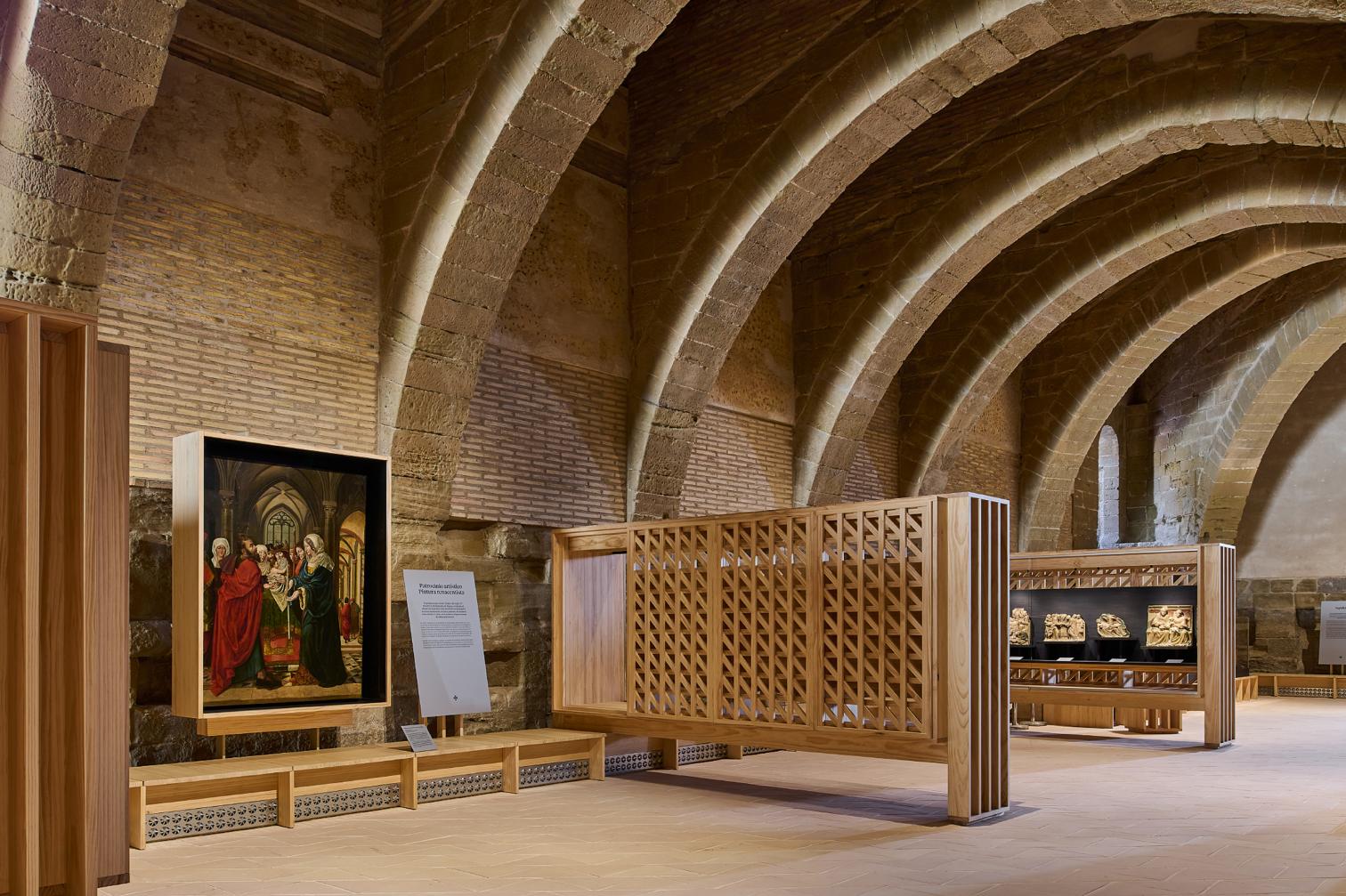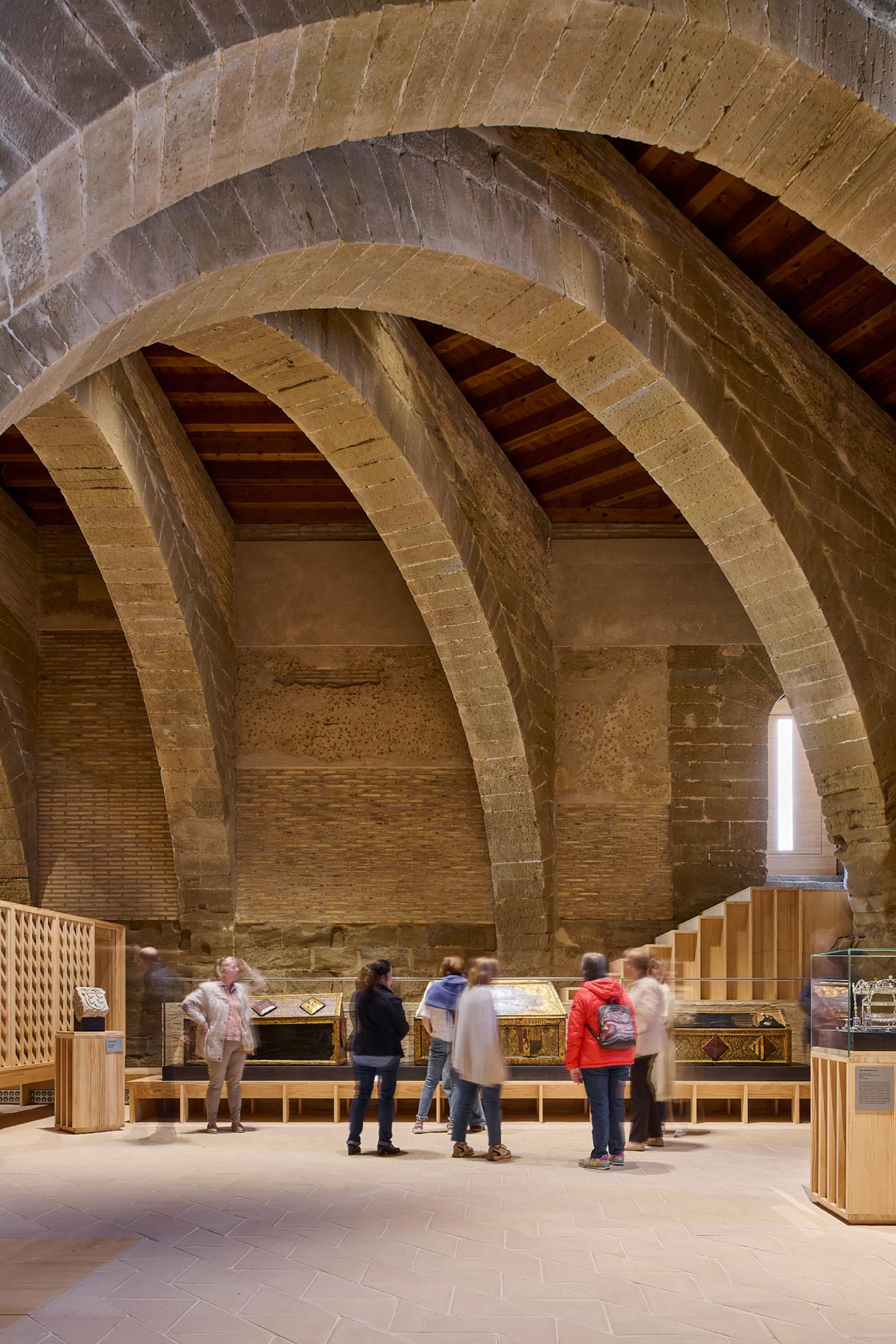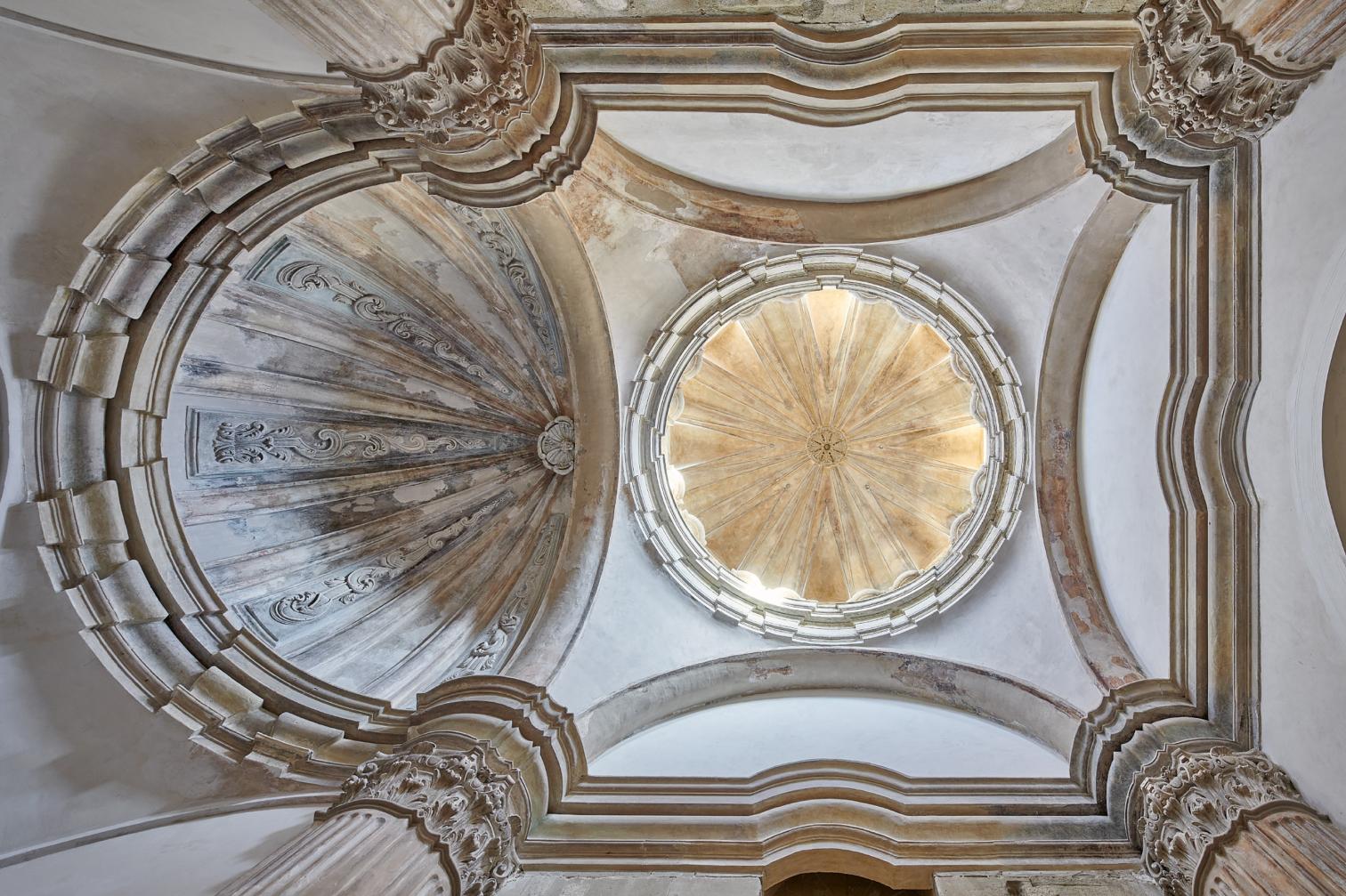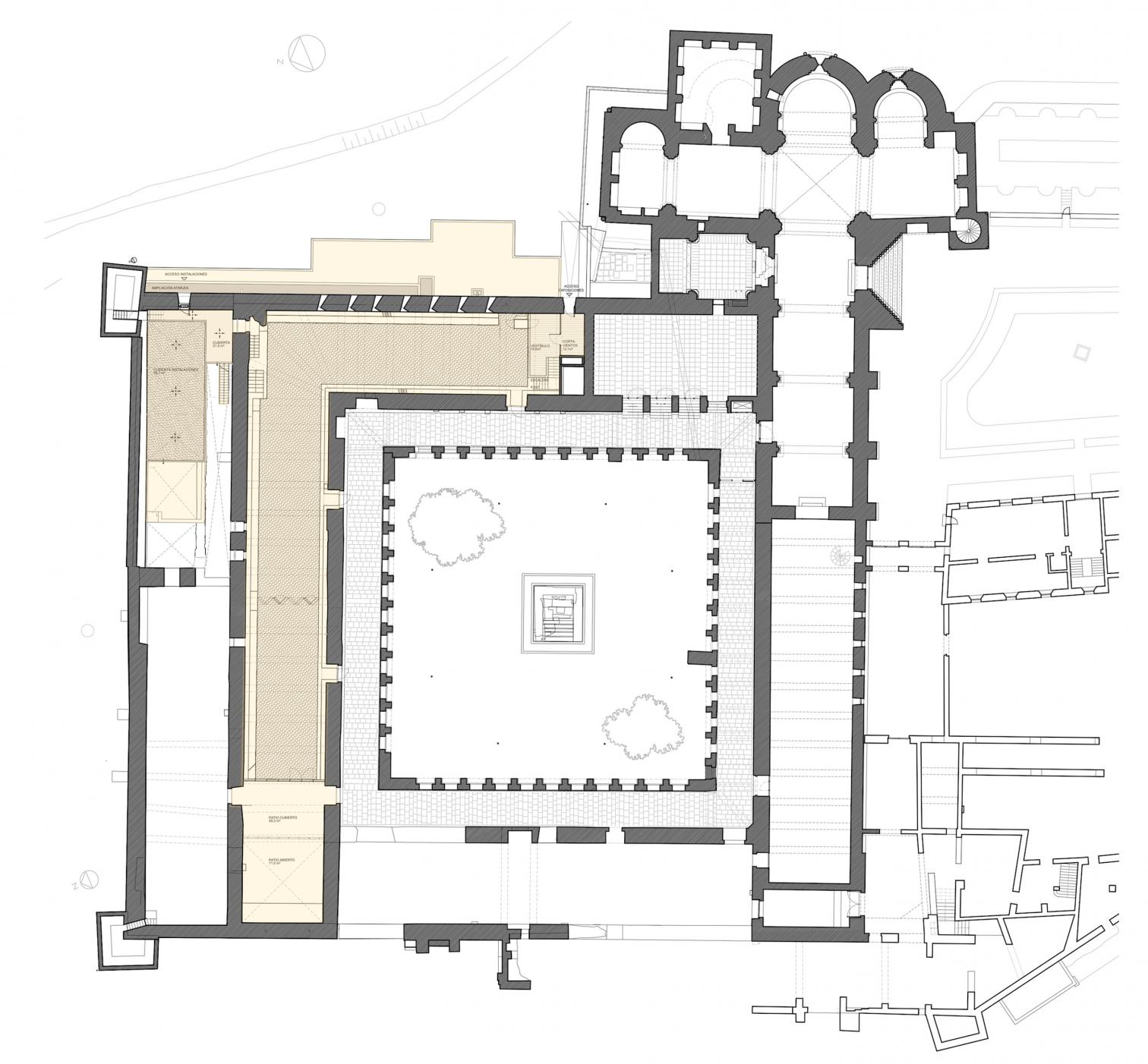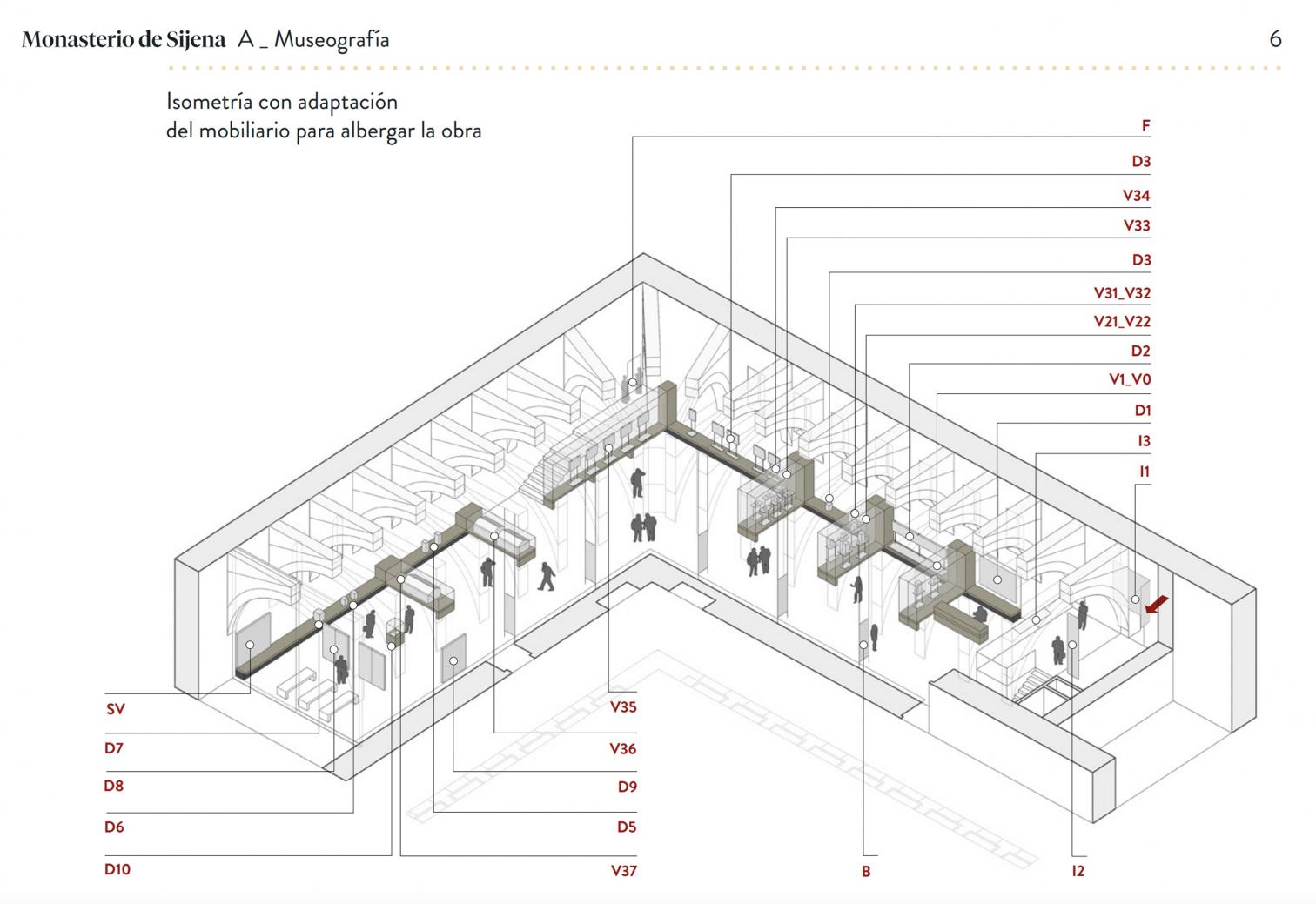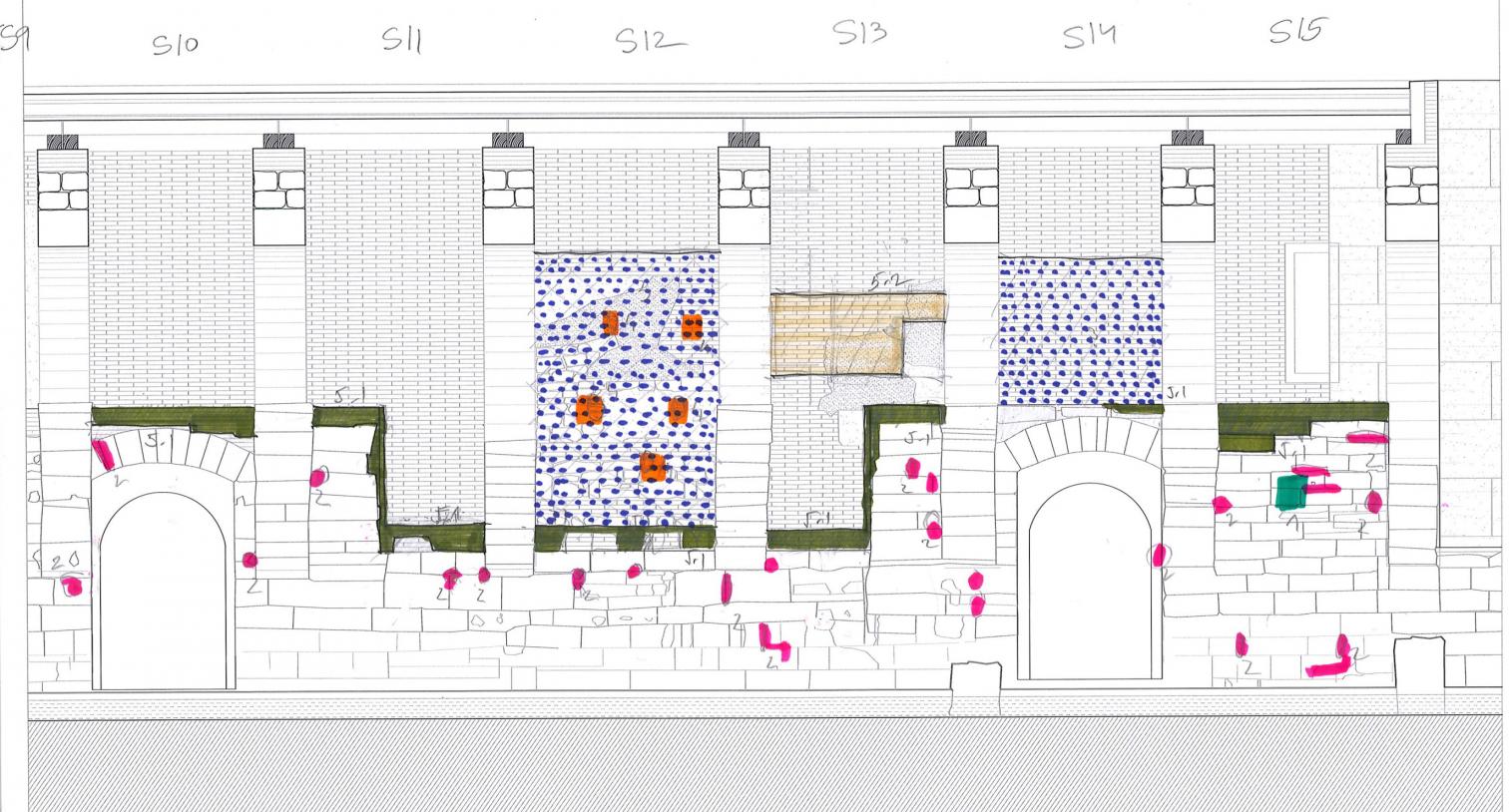Fitting out of Sijena Monastery dormitory
Sebastián Arquitectos Pemán y Franco Arquitectos Zaragoza- Type Refurbishment
- Date 2025
- City Villanueva de Sijena (Huesca)
- Country Spain
- Photograph Iñaki Bergera
- Brand iGuzzini
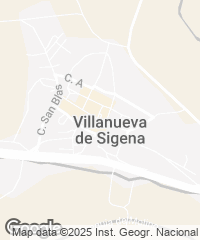
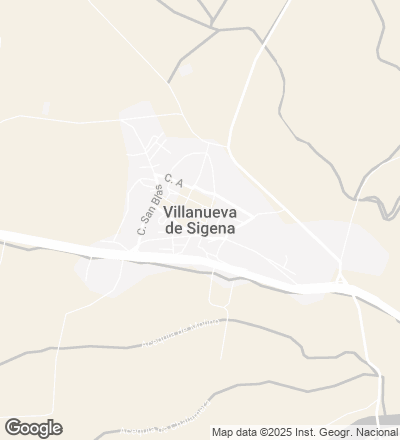
The Royal Monastery of Santa María de Sijena, founded in 1188, has undergone a thorough transformation, one which has restored all the dignity of its historic spaces. The latest intervention, completed recently, has fitted out the old dormitory hall as an exhibition gallery for heritage pieces that have been returned to the monastery.
The project is part of an ambitious restoration process that began in 2002, after decades of abandonment and neglect of damages caused by fire during the Spanish Civil War. The works carried out have respectfully addressed structural and pathological problems, such as persistent humidity derived from groundwater, through a deep drainage system that channels water to the lowest level of the water table.
In the specific case of the dormitory hall, the intervention has been tackled along three lines of action. First, the restoration of the original structure of perpend arches and stone and earth walls, combined with reintegrations in an architectural language coherent with the evolution of the premises. A paneled wooden ceiling suggests that there was once a second level, a gesture of constructive memory without falsities. Second, a ceramic ‘carpet’ that serves two purposes: to conceal the technical services and guard against rising humidity. Finally, functional and museum-specific elements – such as display cases and other items – have been incorporated, carefully designed to integrate in the space with sobriety, evoking the monastery’s old cells, lattices, benches, and other fixtures.
The air conditioning equipment and other services are placed outside the building, in a discreet brick volume, and the ducts and wires are channeled under the floor so that they do not interfere with the original walls. The enclosure of the space is resolved by means of a stained-glass window that maintains visual continuity in the direction of the courtyard.
Honoring the monastic legacy of the place, the project has succeeded in revitalizing the medieval spaces through a balance between old and contemporary. The materials used, such as brick and the triangular ceramic pieces arranged diagonally on the pavement, are presented with honesty and without artifice, reinforcing the austere character of the place.
